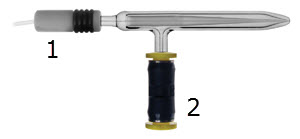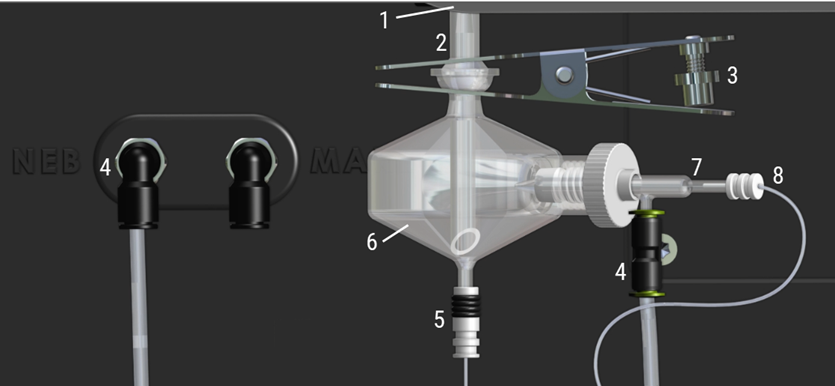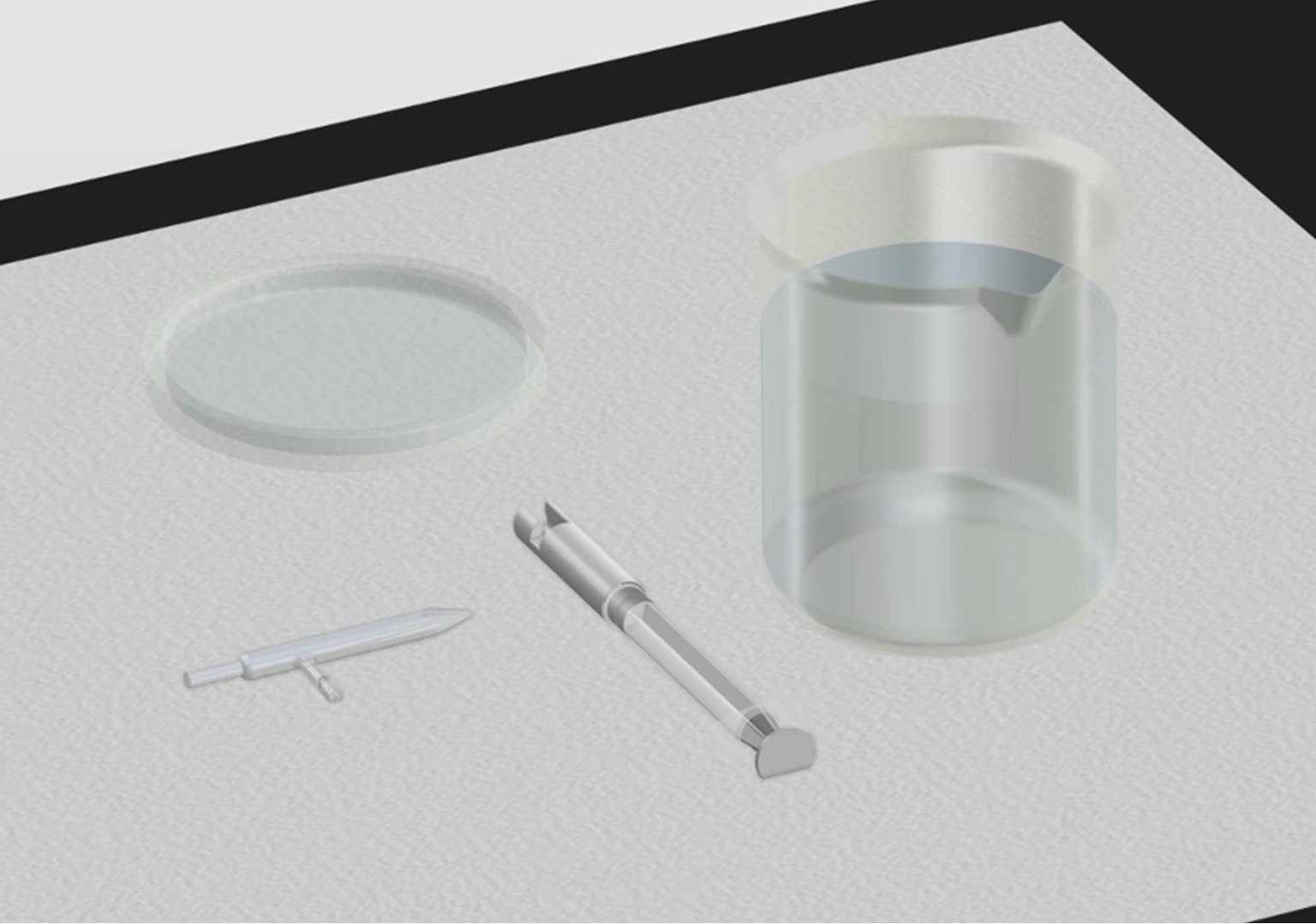Cleaning the Nebulizer
 |
Before removing the nebulizer from the spray chamber, rinse with rinse solution. Always wear appropriate safety equipment and follow all regulations for chemical use and disposal. |
To clean the nebulizer:
- Turn off the plasma and peristaltic pump.
- Remove the gas inlet tubing from the nebulizer side arm. (2 in the image below)
- Remove the sample inlet line tubing (if applicable). (1 in the image below)
 |
Not all nebulizers are the same. Fittings will vary depending on the nebulizer. |

- Unscrew the white knurled nut, or gently twist the nebulizer (depending on the nebulizer and spray chamber used) to remove it from the spray chamber, being careful not to touch the tip of the nebulizer. See Figure 1 below.
 |
The concentric glass nebulizer is fragile and easily broken. Handle it with extreme care and ensure that the tip is protected from damage. Wear appropriate safety gloves and clothing. |
- Using a syringe or nebulizer cleaning tool, push water, methanol or rinse solution through the nebulizer in the reverse direction to normal flow. Either push liquid through using the nebulizer cleaning tool or pull it through with a syringe by placing the tip of the nebulizer in the solution and applying a vacuum to the sample inlet end. Rinse with deionized water.
- If the blockage remains, push 25% detergent solution through the nebulizer with a nebulizer cleaning tool and then soak the nebulizer overnight. Rinse with deionized water.
 |
Alternatively, apply gas pressure at the nebulizer orifice (for example, use the gas hose fitted to the side arm on the nebulizer) to dislodge the blockage. |
- If the blockage is still present, soak the nebulizer overnight in concentrated nitric acid. Ensure that no air is trapped in the central capillary and that the nebulizer is completely submerged in the acid.
 |
Tip |
  |
Chemical Hazard |
- Rinse well with water and allow to dry before use.
 |
Do not place a glass nebulizer in an ultrasonic bath. Ultrasonic vibrations may cause edge chipping or cracking and degrade the performance of the nebulizer. |
- Reconnect the gas tubing and the sample tubing to the nebulizer.

Figure 1. Torch, spray chamber and nebulizer connections
Where:
|
1. Torch loader handle |
4. Nebulizer gas connections |
7. Nebulizer |
|
2. Torch |
5. Spray chamber drain tubing |
8. Nebulizer sample tubing |
|
3. Torch clamp |
6. Spray chamber |
|
